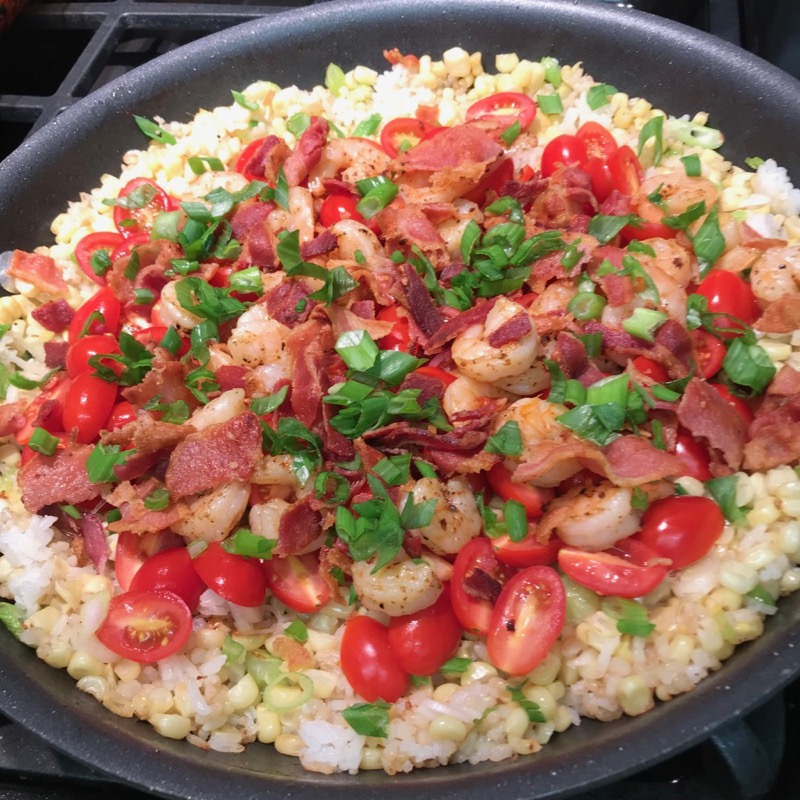 I was determined to get rid of some of those magazines I had laying around, so went through them one day, folding down the corners of pages that looked great. Then, today, a friend and I went into the local specialty olive-oil-and-vinegar store, and picked up a couple of different vinegars and oils. All of this combined to yield tonight’s dinner, served up with a piece of flaky grilled salmon. Perfection!
I was determined to get rid of some of those magazines I had laying around, so went through them one day, folding down the corners of pages that looked great. Then, today, a friend and I went into the local specialty olive-oil-and-vinegar store, and picked up a couple of different vinegars and oils. All of this combined to yield tonight’s dinner, served up with a piece of flaky grilled salmon. Perfection!
Ingredients:
1 lb. mixed potatoes: fingerlings, small white or red potatoes, small blue potatoes (our market sells them together, but you can mix and match from your grocer’s produce section). Cut all potatoes the same size (I made them all about the size of a man’s thumb.)
1 cup sweet pearl tomatoes, cut in half
1-1/2 cups (approximately) sugar snap peas, washed and cut in half, ends trimmed
4 very thin slices of red onion, cut into quarters, then soaked in water for 5 minutes
1 clove garlic, chopped fine (not smashed), then soaked in water for 5 minutes
7-8 basil leaves
salt and pepper — If you don’t have a salt grinder, use a few shakes of David’s Kosher Salt (no substitutions)
Splashes of other vinegars: red wine or lemongrass mint or your other favorite tangy vinegar
Extra drizzles of flavored olive oils: herb, or lime, or other mild flavors
Preparation:
Cook potatoes in salted boiling water until almost tender. To the same pot, add snap peas and cook until crisp (potatoes should be tender). Check by dunking the snap pea in ice water; don’t overcook. Drain and then place in ice water bath to cool quickly and to stop the cooking.
 Meanwhile, while potatoes are cooking, snip the basil leaves into ribbons in the bottom of a medium bowl. Add cut tomatoes. Drain the onions, and add those to bowl.
Meanwhile, while potatoes are cooking, snip the basil leaves into ribbons in the bottom of a medium bowl. Add cut tomatoes. Drain the onions, and add those to bowl.
Make up a batch of Lemon Vinaigrette, added the drained garlic to the mix, along with salt and pepper, and a splash or two of other vinegars. Pour over the above vegetables and let sit for a few minutes to blend. (Note: you can reverse the order of this–prep up the vegetables, then putting the potatoes on to boil.)
When potatoes are cooked and cooled down, drain and pour onto clean kitchen towel, patting to remove excess water. Place the potato/snap pea mixture into the bowl with the vegetables, toss to coat evenly. Add drizzles of flavored oils, splashes of vinegar if it doesn’t have enough kick, and plenty grinds of your salt shaker.
Serve immediately.
Happy Summer!

















